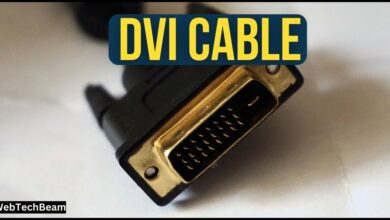What is a Gasket Keyboard?

A gasket keyboard is a mechanical keyboard that uses a gasket to cushion the impact of typing. The gasket is typically made from rubber or foam and is placed between the keyboard’s plate and its case. This design helps reduce noise and vibration, providing a softer and more comfortable typing experience.
Gasket keyboards are used to enhance the overall feel and sound of typing. They are essential because they offer a quieter, more satisfying typing experience by dampening the noise when pressing keys. This also helps to prevent fatigue during extended typing sessions, making them ideal for professionals who type a lot.
Gasket mounting in keyboards originated from improving typing comfort and sound quality. Over time, keyboard enthusiasts and manufacturers experimented with different materials and designs to perfect this mounting method. Gasket keyboards have become popular among mechanical keyboard enthusiasts who value a premium and refined typing experience.
Components of a Gasket Keyboard

Gasket Mount
The gasket mount is a crucial part of a gasket keyboard. It typically consists of a gasket material, like rubber or foam, between the keyboard’s plate and case. This material helps cushion keystrokes, reducing noise and the impact felt during typing.
Types of Gasket Materials:
- Rubber: Provides a soft feel and good durability.
- Foam: Offers excellent cushioning and sound dampening.
Benefits of Using a Gasket Mount:
- Noise Reduction: The gasket material absorbs the sound of critical presses, making the keyboard quieter.
- Enhanced Typing Comfort: It reduces the vibrations transferred to your fingers, providing a more comfortable typing experience.
- Improved Durability: The cushioning material can help prevent damage to other keyboard components over time.
Keyboard Frame
The keyboard frame is the outer structure that holds all the internal components together. It’s vital for providing stability and protection to the keyboard.
Construction and Materials Used in the Frame:
- Aluminium: Known for its strength and durability, aluminium frames offer a premium feel.
- Plastic: A more affordable option, plastic frames can still be durable and lightweight.
- Wood: Sometimes used for a unique aesthetic, wood frames can offer a distinct look and feel.
PCBs and Switches
The Printed Circuit Board (PCB) and switches are essential components that determine how the keyboard functions.
Compatibility and Types of PCBs and Switches Used in Gasket Keyboards:
- PCBs: Most gasket keyboards use a custom PCB designed to fit the specific layout and design of the keyboard. These PCBs are compatible with various programmable features and layouts.
- Switches: Gasket keyboards can use different mechanical switches, such as Cherry MX, Gateron, or Kailh. The choice of switches can affect the keyboard’s typing feel, sound, and overall performance.
What is a Gasket Mounted Keyboard?
A gasket-mounted keyboard is a mechanical keyboard that uses unique materials, like rubber or foam, between its internal parts. These materials, called gaskets, help make typing smoother and quieter.
The gaskets cushion each key press and reduce noise, making it more comfortable to type for long periods.
This design also protects the keyboard’s inside parts from wear and tear. People who love mechanical keyboards often prefer gasket-mounted keyboards because they offer a premium typing experience.
How a Gasket Keyboard Works

Mechanism
A gasket keyboard is designed to provide a unique and comfortable typing experience. Here’s how it works:
Pressure Distribution
The gasket material helps evenly distribute the pressure from your keystrokes. When you press a key, the gasket compresses slightly. It disperses the force, preventing hard impacts between the keyboard’s plate and case.
Shock Absorption
The gasket acts as a shock absorber. It cushions the impact when keys are pressed, reducing the strain on your fingers and hands. This makes typing for long periods less tiring and more comfortable.
Vibration Damping
Vibrations can be transferred from the keys to the keyboard’s frame when typing. The gasket material dampens these vibrations, minimizing the noise and providing a quieter typing experience.
Assembly Process
Assembling a gasket keyboard involves several steps. Here is a step-by-step guide to help you understand the process:
Step 1: Prepare Components
Gather all the necessary parts, including the keyboard frame, PCB, switches, gasket material, and keycaps. Ensure you have all the tools required for assembly, such as a screwdriver and tweezers.
Step 2: Install the Switches
Begin by inserting the mechanical switches into the PCB. Make sure each switch is securely in place. Hot-swappable PCBs allow you to easily plug in the switches without soldering.
Step 3: Attach the Gasket
Place the gasket material around the edges of the keyboard plate. Ensure that it is evenly distributed and securely attached. This will help in cushioning the keystrokes effectively.
Step 4: Mount the PCB and Plate
Carefully align the PCB with the keyboard plate and the gasket. Secure them together, ensuring the gasket remains between the keyboard plate and the case.
Step 5: Insert the PCB and Plate into the Frame
Place the assembled PCB and plate with the gasket into the keyboard frame. Ensure that everything fits snugly and that there are no loose parts.
Step 6: Screw the Frame Together
Use a screwdriver to secure the frame, making sure that all screws are tight and the structure is stable.
Step 7: Add Keycaps
Finally, attach the keycaps to the switches. Press down firmly to make sure each keycap is seated correctly.
Step 8: Test the Keyboard
Once assembled, connect the keyboard to a computer and test each key to ensure it is working correctly. If some keys are not functioning properly, make any necessary adjustments.
Following these steps, you can assemble a gasket keyboard and enjoy its unique typing experience.
Advantages of Gasket Keyboards

Typing Comfort: Enhanced Comfort Due to Cushioning Effect
The cushioning effect of the gasket material in the keyboard makes typing much more comfortable. When you press a key, the gasket gently absorbs the pressure, protecting your fingers from hard impacts. This feels good and reduces the strain on your hands, allowing you to type for extended periods without discomfort.
Sound Damping: How Gasket Mounts Contribute to Quieter Typing
Gasket mounts help make typing quieter. They absorb the sound made when keys are pressed, preventing the noise from travelling through the keyboard and into your desk. This results in a much softer typing experience, especially useful in quiet environments or shared workspaces.
Stability and Flexibility: Improved Stability and Flexibility Provided by the Gasket
The gasket material adds both stability and flexibility to the keyboard. It helps keep all the parts tightly in place, reducing unwanted movement. At the same time, it allows flexibility, so each key press feels smooth and consistent. This balance enhances the overall feel and performance of the keyboard, making it a joy to use.
Disadvantages of Gasket Keyboards
Cost
One of the main downsides of gasket keyboards is their higher cost. They are often more expensive than traditional keyboards because they use special materials and have a unique design.
Complexity
Another drawback is the complexity of assembling these keyboards. The process involves multiple steps and requires precision to ensure everything fits perfectly. This can be challenging, especially for beginners.
Durability Concerns
Over time, the gasket material in these keyboards may wear out. This can reduce its ability to cushion keystrokes and dampen sound, potentially affecting the keyboard’s performance and comfort.
What is the difference between a tray and a gasket keyboard?
| Feature | Tray Keyboard | Gasket Keyboard |
| Mounting Method | Key switches are mounted directly to a tray | Key switches are mounted on a gasket |
| Sound Profile | Typically louder, more pronounced | Quieter, dampened sound |
| Typing Feel | Firmer, more rigid typing experience | Softer, more cushioned typing experience |
| Vibration Dampening | Less vibration absorption | Better vibration dampening |
| Assembly Complexity | Generally simpler to assemble | More complex to assemble |
| Key Switch Flexibility | Less flexibility in key switch movement | More flexibility, key switches can flex |
| Cost | Usually more affordable | Often more expensive |
| Customizability | Limited customizability | Higher level of customizability |
| Popularity | Common in budget and mid-range keyboards | Common in high-end and custom keyboards |
| Durability | Generally durable | Can be less durable due to gasket wear |
Conclusion
A gasket keyboard uses unique materials to provide a distinctive and comfortable typing experience. This type of keyboard features cushioning through gasket mounts that absorb pressure, reduce strain and dampen sound. These characteristics make it quieter and more stable than traditional keyboards.
Gasket keyboards stand out for their comfort, quiet operation, and enhanced stability. While they can be more expensive and complicated to assemble, their benefits make them an excellent choice for anyone looking to improve their typing experience.





